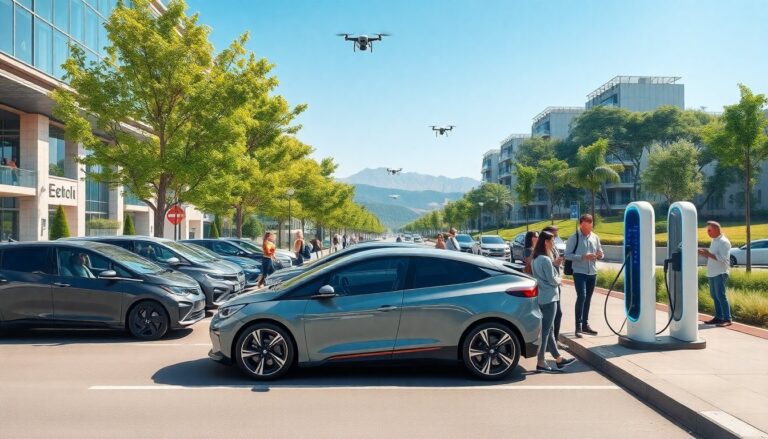Argomenti trattati
The automotive industry is undergoing a significant transformation, driven by advancements in technology and shifting consumer demands. Understanding the key trends shaping this dynamic field is essential. The rise of electric vehicles (EVs), integration of artificial intelligence (AI), and the development of autonomous driving are innovations that will redefine how we experience mobility.
The evidence
One of the most significant trends is the growing adoption of electric vehicles. With increasing concerns about climate change and air quality, many governments are implementing stricter emissions regulations. This shift is prompting manufacturers to invest heavily in EV technology. The global market for EVs is expected to experience exponential growth, driven by advancements in battery technology and the expansion of charging infrastructure.
Battery innovations
At the heart of this revolution is battery technology. Innovations such as solid-state batteries promise to deliver higher energy densities, faster charging times, and improved safety compared to traditional lithium-ion batteries. Companies like Tesla and various startups are racing to bring these advanced batteries to market, significantly enhancing the range and performance of EVs.
Artificial intelligence and connected vehicles
Another critical trend is the integration of artificial intelligence in vehicles. AI enables cars to become smarter, offering features such as predictive maintenance, advanced driver-assistance systems (ADAS), and enhanced navigation. With AI technology, vehicles can learn from their environment, adapt to driver behavior, and even communicate with each other.
Smart navigation systems powered by AI are revolutionizing driving. These systems analyze real-time traffic data to optimize routes, suggest alternative paths during congestion, and predict the best times to leave for a destination. This technology enhances the driving experience and contributes to reducing traffic congestion and emissions.
The rise of autonomous driving
The quest for autonomous driving technology is reshaping the automotive landscape. Companies like Waymo and Uber are at the forefront of developing self-driving vehicles, which promise to transform urban mobility. Although fully autonomous vehicles remain in the testing phase, significant advancements have been made in Level 2 and Level 3 driving automation, allowing for features such as highway driving assist and traffic jam assist.
Regulatory challenges
The path to widespread adoption of autonomous vehicles is fraught with challenges. Regulatory frameworks and safety standards must evolve to accommodate these innovations. Governments will play a crucial role in establishing guidelines and ensuring that autonomous vehicles meet safety requirements before they can be widely deployed on public roads.
What happens next
As the automotive industry continues to evolve, it is crucial for consumers, manufacturers, and policymakers to stay informed about these trends. The future of automotive technology is promising, with exciting innovations on the horizon that aim to make driving safer, cleaner, and more efficient. By embracing these changes, the automotive ecosystem can become more sustainable and technologically advanced.

